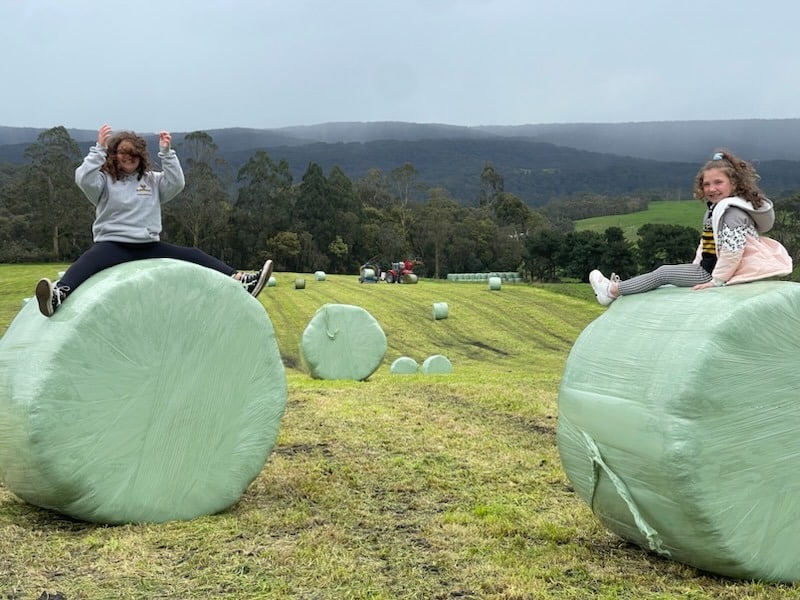With a long and dry summer behind us, farmers can finally gear up for silage!
Silage remains one of the most cost-effective protein sources for livestock—so getting it right is essential. Several factors influence silage quality, including grass type, sugar content, fertilizers, growth stage at cutting, DM levels, chop lengths, contamination, additives, ensiling speed, air exposure, and feeding techniques.
Lets Embrace Proactive Management for Successful Silage Production in 12 Steps!
- Assess pasture conditions
- Evaluate grass type, variety, and growth stage.
- Check for pest or diseases that might affect quality.
- Soil Health check
- Check soil for nutrient levels; apply fertilisers as needed.
- Plan for the right balance of nutrients to enhance grass sugar content.
- Book contractors or buy wraps and nets
- Webber and Chivell Ag Services offer everything you need! Silage wraps and net for all your silage needs!
- Inoculant Procurement
- Inoculants help to conserve silage and drive fermentation. This prevents undesired microbes from robbing valuable protein and energy from forage. It reduces dry matter losses by about 2-3 % per unit.
- Purchase silage inoculants from Webber & Chivell to boost fermentation and minimize losses.
- Ensure you have the right applicator and quantity (250 ml per ton of fresh silage) Research shows that silage inoculants increase daily DMI of a first cut silage by 1.5 KG.
- Inoculants help to conserve silage and drive fermentation. This prevents undesired microbes from robbing valuable protein and energy from forage. It reduces dry matter losses by about 2-3 % per unit.
- Set DM target
- Aim for a target dry matter content of 32%-35% (pit) / 35-40% (round bales) for optimal quality and prevent risk of silage effluent (<30% DM).
- Silage with low dry matter content or high soil contamination is prone to significant losses, typically ranging from 15% to 30% DM due to shrinkage and mold contamination. In a worst-case scenario, this can turn silage that initially cost 30 c/kg DM to produce into feed that effectively costs >40 c/kg DM when consumed. Using a silage inoculant can significantly mitigate losses and help preserve the quality of your silage.
- Aim for good fermentation with a DM of >32% DM for pits and >35% bales to reduce contamination risk.
- Aim for a target dry matter content of 32%-35% (pit) / 35-40% (round bales) for optimal quality and prevent risk of silage effluent (<30% DM).
- Monitor and Adjust
- Check Dm and chop lengths on the first load; make necessary adjustments.
- Assess DM content every 2 hours during harvest due to changing weather conditions.
- Chop length calibration
- The higher DM level, the more difficult compaction becomes and the shorter the chop length needs to be set. Follow the ideal chop lengths based on DM content.
- >37% DM: 1-2 CM
- 32-37% DM: 2.5 CM
- 28-32% DM: 2.5-5 CM
- 22-28% DM: 8-10 CM
- <22% DM: 8-10 CM
- Aim for a high density in bales for better preservation.
- The higher DM level, the more difficult compaction becomes and the shorter the chop length needs to be set. Follow the ideal chop lengths based on DM content.
- Grass timing
- Cut silage early in the season, ideally at or near canopy closure to maximise quality.
- Contamination control
- Avoid soil contamination by using clean equipment and monitoring the area where silage is harvested. Raise the cutting in pugged paddocks.
- Seal it Right
- Use high-quality silage wraps and nets to minimize air exposure – ensure that the wrap is tight and sealed to prevent spoilage.
- Storage monitoring
- Regularly check for any holes and sights of spoilage or air pockets in storage.
- Maintain a clean environment around the silage storage area.
- Review and analyse
- After harvest, analyze the quality and yield of the silage produced. Identify areas for improvement in the next cycle based on losses observed. And assess re-growth potential and fertiliser application for the next cycle.
